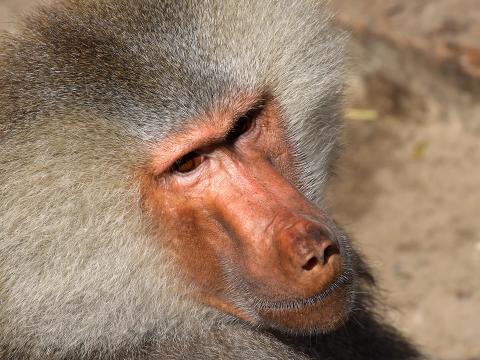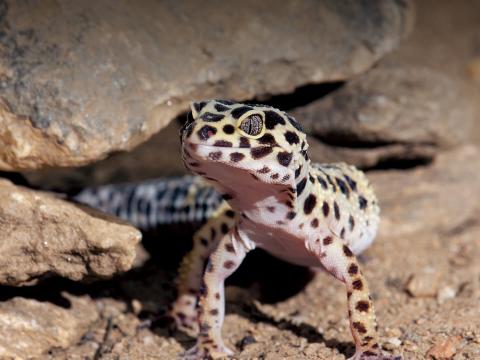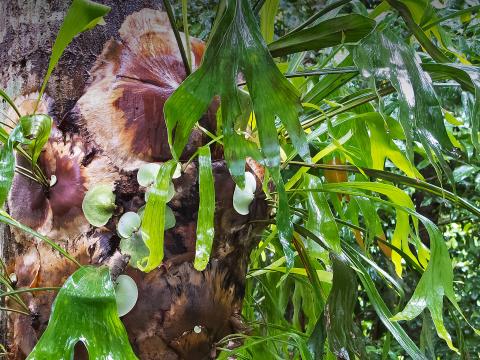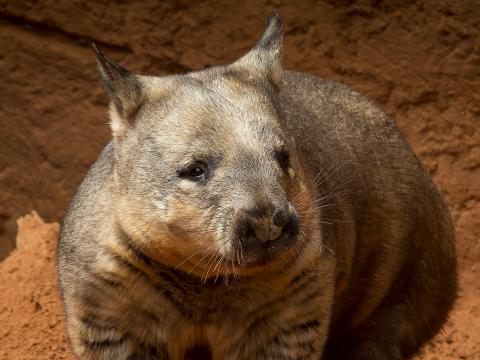Tuatara
- CLASS: Reptilia (reptiles)
- ORDER: Sphenodontia
- FAMILY: Sphenodontidae
- GENUS: Sphenodon
- SPECIES: punctalus
ABOUT
A unique reptile: Not too many creatures can claim to be “one of a kind,” but that’s a boast the tuatara can make. In fact, the tuatara is among the most unusual wildlife in the world. Although it looks like a lizard, it really is quite different. Found in New Zealand only, the tuatara’s closest relatives are an extinct group of reptiles from around the time of the dinosaurs.
Both male and female tuataras have a crest of spiky scales, called spines, down the center of their back and tail. Males are larger than the females. The name “tuatara” is a Maori word meaning “peaks on back” or “spiny back.” Tuataras have no external ears as lizards do; they enjoy cooler weather, while lizards like it warm; and, unlike lizards, tuataras are nocturnal.
But their most curious body part is a “third eye” on the top of the head. The “eye” has a retina, lens, and nerve endings, yet it is not used for seeing. It is visible under young tuataras’ skin but becomes covered with scales and pigment in a few months, making it hard to see. The unique eye is sensitive to light and may help the tuatara judge the time of day or season.
HABITAT AND DIET
Tuataras are found only in New Zealand. In 1989, a group of tuataras was discovered on New Zealand's Brothers Islands, on one tiny, 10-acre (4-hectare) “rock” island. About 600 tuataras live on a 5-acre (2.2-hectare) patch of scrub vegetation at the top of the island. In 1990, it was initially decided that the Brothers Island tuatara was a separate species (Sphenodon guntheri), however scientists later concluded that there is just one species, which includes all tuataras: Sphenodon punctatus.
Adult tuataras are active at night because that’s when their food is most available, although they do come out of their burrow to bask in the sun. They eat mostly insects, especially beetles, but have been known to eat lizards, birds, and bird eggs. Young tuataras usually hunt for food during the day to keep from being eaten by adult tuataras at night!
There are two rows of teeth on the upper jaw and one row on the lower jaw that fits between the upper rows of teeth when the mouth is closed. The arrangement of the teeth helps tuataras tear apart hard insects. These small teeth are not replaced when lost or broken, and older tuataras have to eat softer food items as their teeth wear down.
FAMILY LIFE
A long incubation: Males can reproduce every year, but females generally breed every two to five years. In March, male tuataras begin sitting outside females’ burrows, waiting for a chance to mate. They fan out the larger crest of spines around the neck in the hopes of impressing the females. If one is interested, breeding occurs. Males have no reproductive organ, so reproduction occurs by the pair rubbing their cloacas together. The female can store sperm for 10 to 12 months before laying 1 to 19 white, soft-shelled eggs in nesting burrows.
The eggs incubate in the covered burrow for 12 to 15 months before hatching, possibly the longest incubation period of any reptile. Sadly, this extremely long time gives predators, usually rats, plenty of opportunities to have tuatara eggs for breakfast, lunch, or dinner. Tuatara hatchlings are on their own as soon as they break out of their egg, as the mother does not stay to protect the eggs or her babies. The hatchlings are more active than the adults and must quickly find food and dig small burrows for protection.
Like some other reptiles, such as alligators, the temperature of the nest where it incubated as an egg determines a tuatara’s sex. It has been found that a difference of just one degree centigrade can change the young in a clutch of eggs from all females to all males! Since higher temperatures create more males, there is some concern about the effects global climate change could have on the survival of tuatara populations.
CONSERVATION
Tuataras in trouble: Tuataras used to inhabit the two major islands in New Zealand and numbered in the millions. Then, the first humans arrived from Polynesia, bringing rats and dogs that ate tuatara eggs and youngsters. When Europeans arrived in New Zealand, they also brought more dogs and rats, as well as cats and ferrets. These introduced animals wiped out most tuatara populations. The threat to tuataras was so serious that in 1895, the New Zealand government fully protected tuataras and their eggs.
Even with this protection, tuatara populations continued to disappear as rats reached one island after another. The most recent extinction of an island population happened in 1984, when rats killed all the tuataras on a 25-acre (10-hectare) island in just 6 months. Recent studies have confirmed that tuatara populations on islands without rats are much larger than populations on islands with rats. Today, tuataras survive on just 37 tiny offshore and mainland islands in New Zealand.
The New Zealand Department of Conservation launched a recovery program for tuataras in 1988. The program aims to stop the continuing extinction and help tuataras threatened by rats. Hatchlings are raised by biologists until large enough to survive in the wilderness, a process called “headstarting.” They are then reintroduced onto rat-free islands.
This new hope for tuataras is good news for other species, too. Restoring natural habitat for tuataras also helps kiwis, several seabirds and lizards, and a large flightless insect called the giant weta. These types of wildlife had also been harmed by the rats and other introduced predators.
The San Diego Zoo is one of only a handful of zoos outside of New Zealand with a population of the Brothers Island tuatara. Our conservation scientists have also banked tuatara cells in our Wildlife Biodiversity Bank’s Frozen Zoo®. The tuatara cells took nearly four months to grow to sufficient numbers to freeze (most species require only four weeks), but it was a worthwhile effort: the preservation of genetic diversity through biobanking contributes to our understanding of this unique species and to global conservation efforts.
With these programs in place, tuataras and other wildlife native to New Zealand have a brighter future ahead.
By supporting San Diego Zoo Wildlife Alliance, you are our ally in saving and protecting wildlife worldwide.










